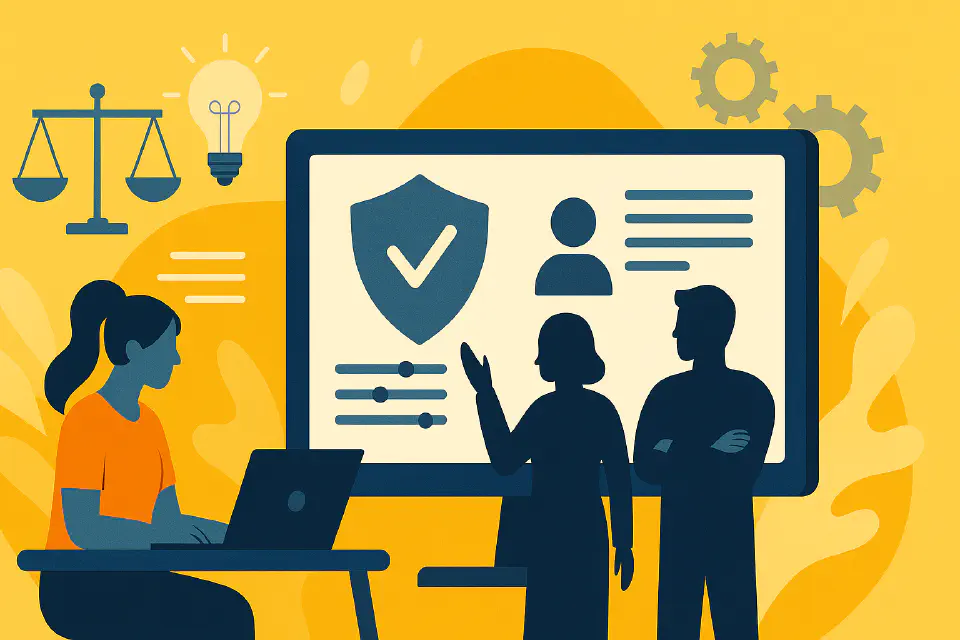
Ethical Innovation in Digital HR
Just because we can doesn’t mean we should. Ethical innovation ensures that digital HR serves people—not just systems.
Digital transformation opens powerful new possibilities for HR—but also real risks. As we automate, analyze, and scale, we must ask: Are we being fair? Transparent? Human?
This article explores what ethical innovation means in HR, how to assess and mitigate risks in digital tools, and why ethical leadership in HR tech is now a strategic imperative.
Why Ethics Matter in Digital HR
Technology is not neutral. Every design choice, algorithm, or data integration reflects values—whether intended or not. In HR, this directly affects:
- Hiring and promotions
- Access to opportunities
- Monitoring and surveillance
- Equity and inclusion
- Trust in leadership
Key Ethical Risks in Digital HR
- Bias in Algorithms
Even well-trained AI can reflect and reinforce historical bias—especially in recruitment, promotion, or compensation.
- Opacity of Decision Logic
Employees may not understand how decisions are made—or who made them—if algorithms are black boxes.
- Over-monitoring
Tracking email metadata, keystrokes, or time-on-platform may create surveillance cultures.
- Consent and Awareness
Employees often don’t know what data is collected or how it’s used.
- Vendor Black Box Tools
Some off-the-shelf systems embed models that can’t be explained or audited.
What Is Ethical Innovation?
Ethical innovation means designing, selecting, and using digital HR tools in ways that prioritize:
- Transparency – Clear explanation of what the system does and how
- Fairness – No undue advantage or harm to individuals or groups
- Consent – Knowing participation in data usage
- Autonomy – Tools support, not replace, human agency
- Accountability – HR owns decisions, not algorithms
Frameworks for Ethical HR Tech
Use these lenses to assess your systems and decisions:
1. The FAT Framework (Fairness, Accountability, Transparency)
Evaluate tools based on:
- Data quality and representativeness
- Explainability of outcomes
- Clear ownership and governance
2. The AI Ethics Principles (OECD, EU, SHRM)
Align tools with international standards covering:
- Human-centric design
- Diversity and inclusion
- Robustness and safety
- Redress mechanisms
3. Privacy by Design
Build consent, minimalism, and control into system setup—not after deployment.
How HR Can Lead Ethically
- Include diverse voices in system design
Test systems across different geographies, roles, and demographic groups.
- Perform impact assessments
Before launching any major system, conduct privacy and ethics assessments.
- Create transparency dashboards
Let employees see what data is collected, how it’s used, and how to appeal.
- Challenge vendors
Ask how their models are trained, what data they use, and how bias is tested.
Communicating About Ethics
Employees don’t need technical detail—they need confidence. Communicate:
- Why the system exists
- What it does and doesn’t do
- What rights they have
- How they’re protected
Balancing Innovation and Risk
Innovation without ethics is reckless. But fear of risk can also paralyze progress. Ethical innovation finds the middle ground by:
- Being proactive, not reactive
- Engaging employees in design
- Setting clear red lines (e.g., no biometric monitoring)
- Reviewing and evolving policies regularly
Final Thought
HR sits at the intersection of people, power, and platforms. That makes ethical leadership not optional—but essential. In the digital era, how we use technology matters just as much as what it can do.